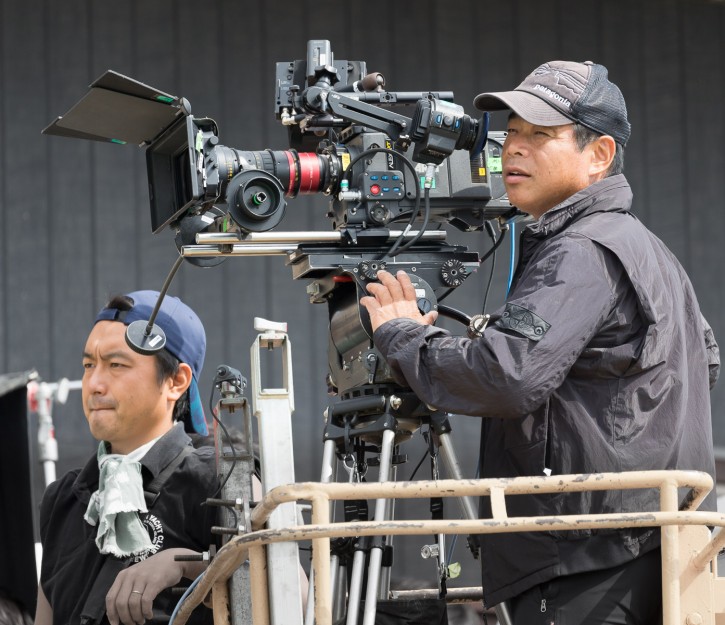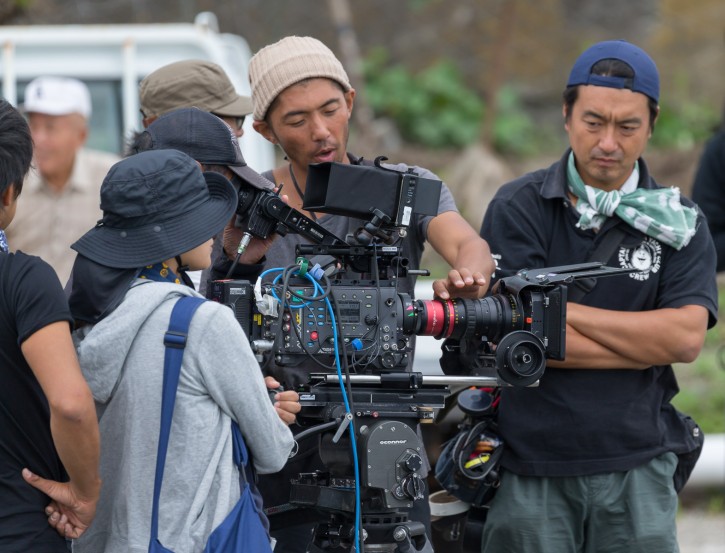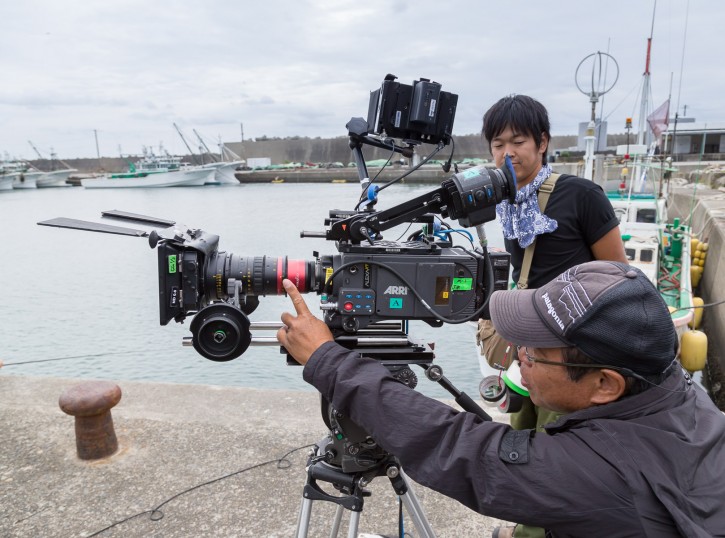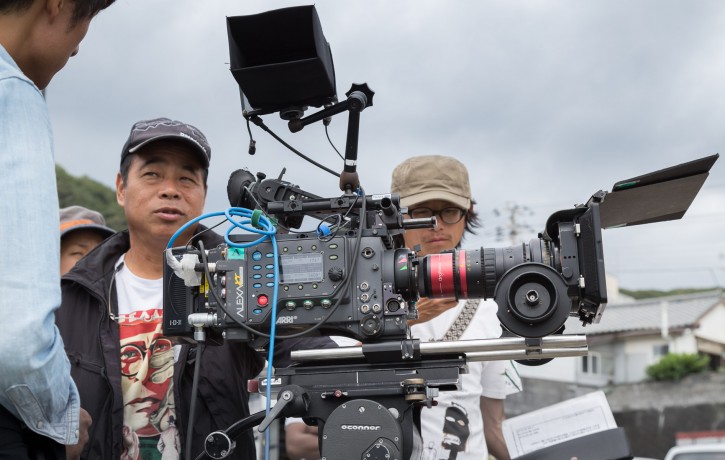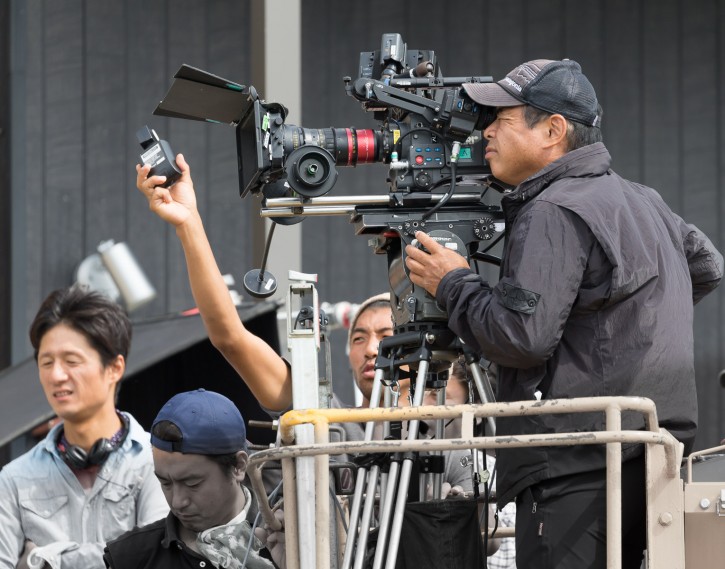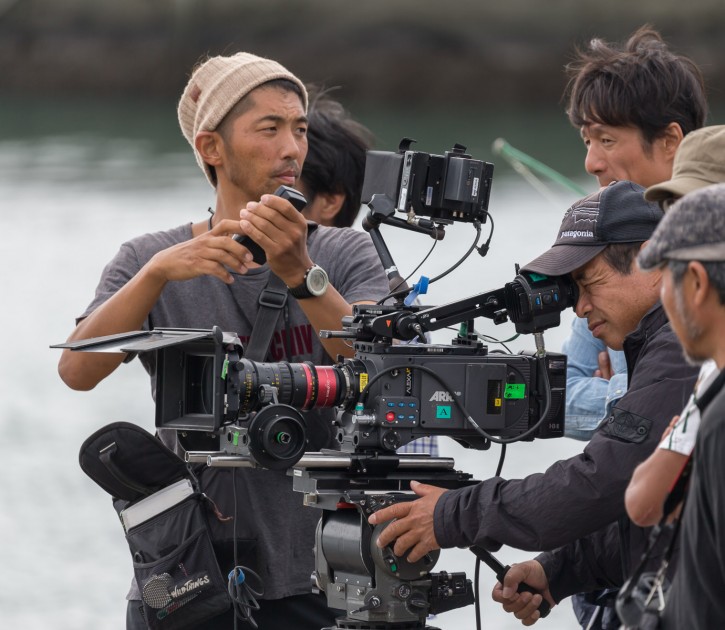 Text and photos by Yasuhiko Mikami. Edited by Jon Fauer.
Text and photos by Yasuhiko Mikami. Edited by Jon Fauer.
The following article ran in the November edition of FDTJ — Film and Digital Times Japan — distributed at InterBEE. Here it is in English.
Cinematographer Norimichi Kasamatsu, JSC recently completed the feature Ikari using a variety of anamorphic lenses.
FDTJ: Tell us about the movie.
Norimichi Kasamatsu, JSC: Ikari is based on a crime novel written by Shuichi Yoshida, and directed by Lee Sang-il. The whole country is in search of a fugitive murderer for over one year. The story features 3 men disguising their past, starting new lives in different locations. This is the second time I have worked on a Yoshida-Lee project, following Villain in 2010.
FDTJ: How did you establish the look of this feature?
NK: The most important instruction was to make this movie look different from Villain. Same author, same director, same DP but a distinctive look was required. The producer and director requested a more saturated, vivid look. Since the 3 stories are interwoven, one of the challenges was to design a particular look for each story and location so that the audience can easily identify which story they are watching.
FDTJ: What equipment did you use to help maintain the style?
NK: We shot Arriraw on Alexa cameras and applied basic viewing LUTs unique to each shooting location. The LUTs were prepared during location scouting, and are not as stylized as they would be in final grade. Something mild enough to give a flavor of the look we are intending to establish was thought enough for on-set monitoring and dailies. The director and crew do not rely much on monitors, and the production environment does not allow the use of large displays anyway. All we have is a 7-inch monitor, which was primarily used by the lighting department.
FDTJ: Why did you decide to shoot anamorphic?
NK: This is the 3rd time I am working with director Lee. We are both big fans of anamorphics due to the distinct bokeh and flare. Our previous work on Unforgiven was an anamorphic film production shot in the wilderness of Hokkaido, thus the anamorphic format was a perfect fit. This project is somewhat the opposite, as we had to shoot in confined spaces both on location and in studio sets. On several occasions I had to ask the director whether we were really going to shoot and release the movie in 2.4:1 or if it would be in 1.85:1. Anamorphics have good horizontal coverage, but I was concerned about the narrow vertical field of view. The director was pretty much determined to go anamorphic, so having access to wide anamorphic zooms and primes was extremely beneficial.
FDTJ: What made you pick anamorphic lenses from 3 different manufacturers?
NK: We evaluated Master Anamorphics, Kowa and Hawk primes. We settled on the Kowas and Hawks, where the two lens lineups complement each other nicely in terms of focal length. Both prime anamorphic sets carry the traditional anamorphic look and feel, and are not terribly difficult to match with each other. We needed the Angenieux zooms for the Steadicam and B-camera. In terms of optical performance, these new Angenieux anamorphic zooms are light years ahead of old HR lenses with anamorphic rear adapters. Having zooms on the Steadicam is extremely useful as you can save time re-balancing the rig after a lens change, and you have the flexibility to adjust the frame easily. Zooms are somewhat addictive as you get to shoot faster without any loss of quality, but a part of me says there is a risk in making you indifferent to lens characteristics.
FDTJ: How did you select lenses for each shot?
NK: Perhaps 70% of the movie was shot on primes: Kowa and Hawk, depending on the focal length. The two Angenieux anamorphic zooms (32-72 and 56-152) were indispensable for Steadicam shots, and we were very fortunate to have one of the very first 30-72 zooms out of the factory. The zooms have very little distortion, which helped to shoot scenes where you see buildings and straight lines in the background. Some of the anamorphic primes have pronounced distortion, which can be disturbing at times. The two zooms have a nice overlap between the long end of one (72mm) and the wide end of the other (56mm). This enabled us to cut between A and B-cameras using zooms–especially when both were set around 65mm. Close MOD was another factor for the zooms: the Angenieux anamorphics focus to around 2’2″. On certain street scenes, we had to use prime anamorphics on the Steadicam as we felt T4 on a wide zoom was not fast enough to separate the foreground. In Okinawa, we had to shoot from a little boat. Exchanging lenses in a rocking boat is not an option, so we intensively used zoom lenses for that particular sequence.
FDTJ: How did you manage to inter-cut shots coming from all those lenses with different characteristics?
NK: We tried to narrow the gap by applying different grades of Tiffen GlimmerGlass on all lenses. Obviously newer lenses require heavier filtering, but we did not apply extreme filtering. The GlimmerGlass also helped to defuse highlights and establish a more summer looking lighting condition. The whole story takes place within the month of August in Japan, where the strong sunlight is always diffused by the intense heat and extreme moisture. There is a minor shift in color across the lenses, but that can be managed in DI. There is very little VFX work and no 3D modeling in the movie so we had no issues coping with different lens distortion characteristics in post.
Equipment provided by NAC Image Technology:
- Alexa XT Plus, ALEXA-M
- Angenieux Optimo Anamorphic: 30-72mm T4, 56-152mm T4
- Hawk V-Lite: 28mm, 35mm, 45mm, 55mm, 65mm, 80mm, 110mm, 140mm
- Kowa 35-BE: 40mm, 50mm, 75mm, 100mm

